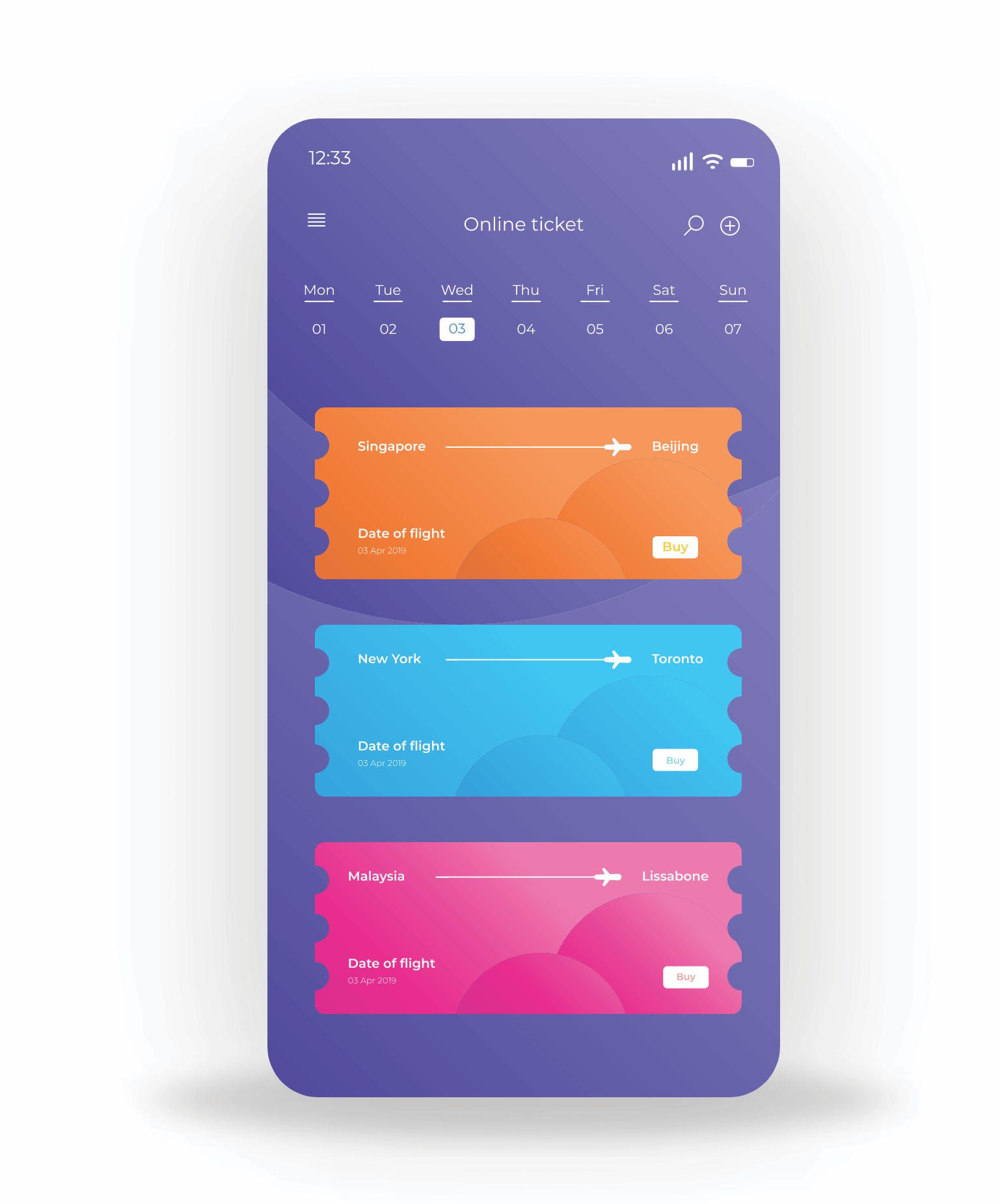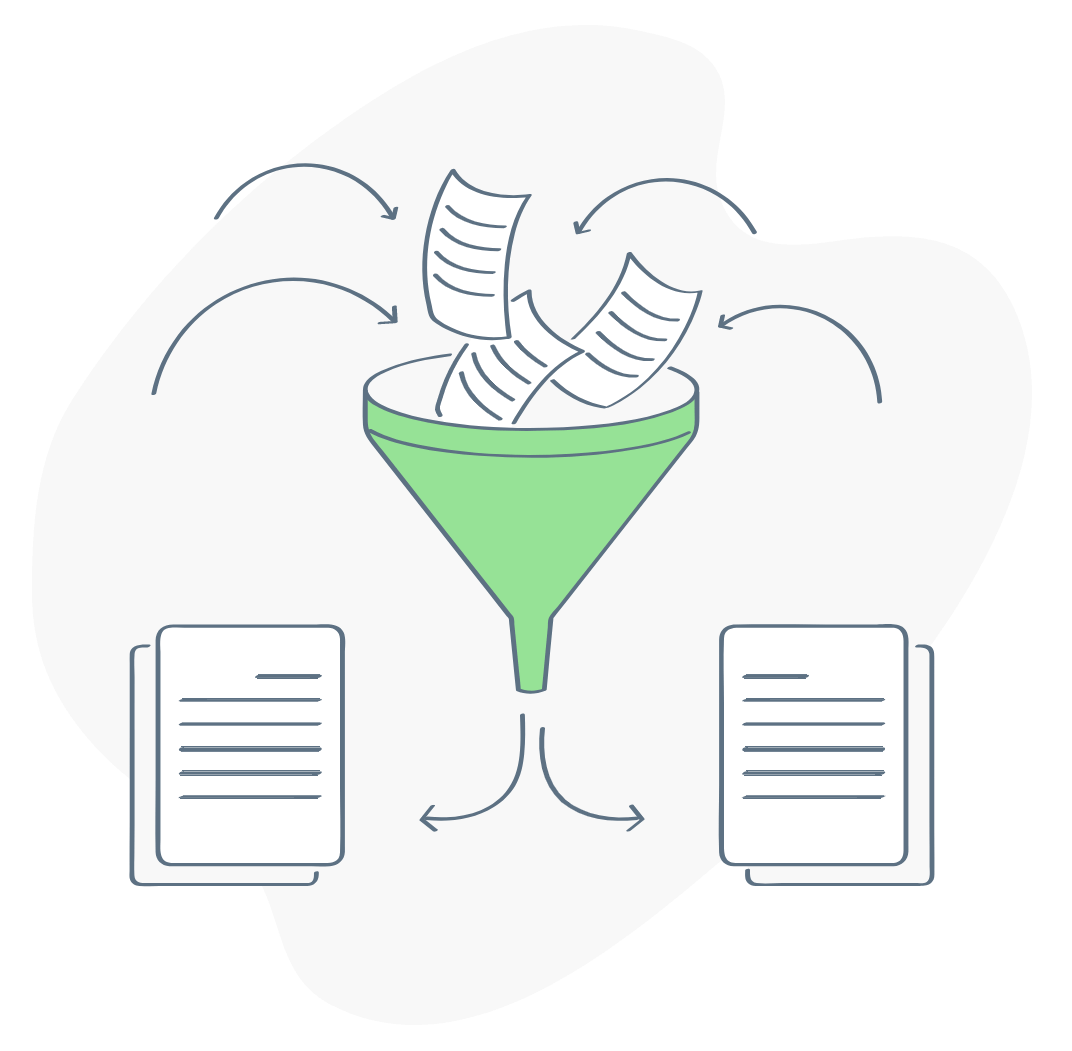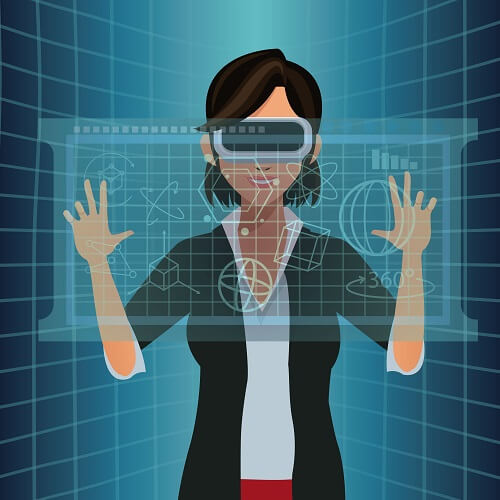
by admin | Nov 20, 2019 | Selenium Testing, Fixed, Blog |
Analysing automation script failures using Exception details is an important skill for an automation tester. Selenium and Appium are the most widely used open-source automation testing tools. If you are aware of the Selenium WebDriver Exceptions list, it would put you at ease while troubleshooting failures. As a leading test automation services company, we would like to list Selenium WebDriver exceptions and their reasons.
Unsupported Command Exception This exception is triggered when the Selenium client library sends a command which is unknown to Selenium Server. For example: If you are using a higher version of the Selenium client library which has new commands, then the lower versions of the Selenium Server can’t understand new commands which are sent from the client.
Stale Element Reference Exception The stale element reference error is a WebDriver error that occurs because the referenced web element is no longer attached to the DOM.
Every DOM element is represented in WebDriver by a unique identifying reference, known as a web element. The web element reference is a UUID used to execute commands targetting specific elements, such as getting an element’s tag name and retrieving a property of an element.
When an element is no longer attached to the DOM, i.e. it has been removed from the document or the document has changed, it is said to be stale. Staleness occurs for example when you have a web element reference and the document it was retrieved from navigates.
Reference: Mozilla MDN Web Docs
Script Timeout Exception This exception is triggered when Selenium JavaScriptExecutor command exceeds its set timeout. The default timeout is 30 seconds. However, you can extend it using Desired Capabilities.
Invalid Selector Exception If XPath/CSS Selector syntax is invalid, then it will throw Invalid Selector Error. Or if the selector’s expression is not selecting an element e.g. count(//input), then Invalid Selector Exception will be invoked.
Invalid Argument Exception The invalid argument error is a WebDriver error that occurs when the arguments passed to a command are either invalid or malformed.
Invalid argument errors can be likened to TypeErrors in JavaScript, in that they can occur for a great many APIs when the input value is not of the expected type or malformed in some way. See the type- and bounds constraints for each WebDriver command.

by admin | Nov 19, 2019 | Mobile App Testing, Fixed, Blog |
Customers today want to experience the best of technology through devices, apps, and surfing online information, without wasting time and expending too much effort. Efficiency and speed are the top priorities and hence customers are drawn towards websites and mobile applications that consistently deliver on these two counts. It is all about the customer now – the user! This is why we as an expert Software Testing Company are consistently building UI (User Interface) and UX (User Experience) testing capability.

The whole premise and perspective of any business would be to enhance profitability by increasing the user base and retaining existing users. A company would aim to ensure that users focus on and use its products rather than that of competition. It is necessary therefore to approach business intelligently and from the perspective of the users, such that service and products align with their expectations. If users hear positive comments they would buy or download the product and would then use it, and form their own opinion. Hence while a new user might first buy a product basis other customer reviews, remaining a customer would depend on the interface and experience they have. Every new user is either a potential brand ambassador or someone who would write a scathing review or might never use a company’s product ever again. It makes sense therefore to ensure that users love your product and efficiency and usefulness are the criteria. Websites and applications must achieve these goals in order for customers to continue using and recommending them to others and this is why user testing becomes critical.
UX testing helps a business to identify the purpose for which customers use the product, and how they use the product to achieve that purpose. Customers expect maximum value from products, and they will question and stop using anything that does not achieve their purpose. Any responsible business will ensure that the websites and applications they produce will bring happiness and top notch usability for their customers. As leading Mobile App Testing Services expert we understand the importance of usability testing to enable businesses to give customers exactly what they expect and need.
Usability testing enables companies to deal with some core issues such as:
- Identification of damaged or severed links
- Bridging content and language gaps
- Fixing page errors
- Ensuring uniformity across sites and applications thereby enhancing the message and image of a brand
- Resolving poor page design layout
UX Testing Benefits
Cost effectiveness and money saving – Ensuring that users get the product they expect and need is necessary in order to save time and money rectifying a sub-standard product that fails to hit home with users. It makes more sense to partner with UI UX testing experts who would ensure that the product that goes out is of the best quality. Through usability testing never have to waste resources on redesign or code factoring later on.
Enhancing Conversion Rates – Usability testing enhances user experiences for websites, which is a proven factor to raise conversion rates by up to 75% – an extremely critical factor for any business. Applications and software solutions too must be able to increase conversions and long-term engagement. Usability testing also ensures that users can provide feedback on the software created. When users are included in the process, they are less likely to criticize and more amenable to providing new ideas with regard to functionality and improvements.
Creating Brand Awareness and Loyalty – A uniform brand experience is necessary to create a good impression on users. Software and applications should be simple, recognizable, unique, and have high quality – and this must be consistent across platforms, devices, and applications. Intuitive, interactive, and easy to navigate user interfaces keep users loyal to a brand and encourage them to spread the word of mouth to others. In addition, uniformity ensures that users and current non-users are able to identify the brand from the look and feel of the websites, software, and applications.
At Codoid we have an expert team that completely understands and is equipped to use all the techniques and tools required to find and fix bugs and ensure that software, applications, and websites are and remain of top quality. Diligence in documentation is extremely important to report bugs and capture recommendations of the solutions. Usability testing is an ongoing process and cannot be done all at once – regular testing across mobile devices and operating systems to ensure compatibility and a holistic user experience is the core of usability testing. Connect with us to create the right testing strategy, which will help to achieve the digital objectives for your business.

by admin | Nov 17, 2019 | Automation Testing, Fixed, Blog |
The benefits of test automation are widely known – delivering high-quality software and solutions speedily and cost-effectively. Automating tests is about assuming that the tests will be conducted repeatedly and with fewer errors. Despite these benefits, it is necessary to remember that automation of tests needs careful consideration prior to implementation owing to the time and financial investment required.
Working with a professional Test Automation Services Company will help to answer your questions and would consider several aspects before suggesting automation of tests. As experts, we will help define the requirements, put together goals, assess ROI, and ensure complete clarity for all stakeholders. We at Codoid, have put together a list of considerations required prior to automating tests.

- When a product has several new releases and defect correction in a running module, automation becomes necessary to check that the bug corrections have not introduced other bugs. The previous functionality would need testing as well, and doing this repeatedly manually would not be an efficient or effective method. The costs in terms of resources, time, and effort would not justify manual testing.
- It is far more effective to automate the tests for web applications that would have a very large number of users simultaneously interacting with the application. Creating the users manually would be extremely tough and time-intensive.
- Automate tests if there are frequent functional changes and GUI is almost static.
- Check the risks of automated testing prior to switching tests to automated mode. As an expert Automation Testing Services Company, we understand the many challenges and risks associated with test automation. Lack of skilled in-house resources is a major risk. Without personnel with programming knowledge, technical abilities, and the skill to adapt speedily to new technologies, automating tests could prove damaging. While manual testing requires investment to hire top-quality manual testers, automation has its share of costs. The initial in-house setup costs including buying automation tools, training the staff, and also maintaining test scripts are quite steep. Several companies now decide in favor of a highly skilled and professional partner offering Automation Testing Services, which proves cost-effective and mitigates the risks of software automation testing.
- Basic User Interface (UI) automation suffices if it is constantly changing. To automate a consistently changing UI would mean incurring a very high cost for script maintenance. As experts, we do not recommend this.
- Unless using an agile environment, it is not recommended to switch to automated testing in the early stages of SDLC since the costs will be prohibitive.
- Complete or 100% automation is not feasible or possible. There are several areas such as testing for compatibility, installation, recovery, UI, documentation – which must be tested manually.
- There are several tests that only require to be run once, and hence would not be a part of regression. Such tests/modules must not be automated.
- The automation suite should be usable or run about 15-20 times each for individual builds in order to pose a high ROI.
In Conclusion
While automation testing is the top method to achieve most of the objectives of testing, and is also the most effective use of time and resources, it is important to remain aware of the considerations of automating tests. It is not a wise move to expect unskilled and inexperienced staff to manage the expensive and comprehensive automation tools. Handling these tools is best left to the experts. We at Codoid recommend a combination of both manual and automation testing to achieve top results for projects. Connect with our experts to experience the benefits of both types of testing and who will ensure that your products gain the highest ROI for you.

by admin | Oct 16, 2019 | QA Outsourcing, Fixed, Blog |
As the app grows bigger and bigger, more QA resources are needed at your disposal. Nevertheless, it’s not fixing the quality-related issues. The crux of the issue is not lack of resources, you have the right budget and resources in hand. The issue is the lack of strategy in implementing the right QA operations to scale” Many times outsourcing too results in subpar performance. Spending exorbitant money, resources, and effort on a quality issue without adopting the right strategy will have adverse effects on the outcome. Read on to the blog article to avoid making such a costly mistake and find out our recommendations to improve your QA operations.

Take ownership of QA internally
Having more QA professionals at disposal won’t reap anticipated benefits, on the contrary, assigning ownership to someone internally will reap great benefits once your QA process is implemented. Ideally, even after outsourcing every other function of your QA services, you need someone hands-on to formulate a rock-solid strategy and to do the overall software testing efficiently.
Consolidate your QA & Development Resources
Always on the lookout for opportunities to bring your QA team in synchronization with the development process and development team for a better outcome. “The more you bring your QA team involved into the development process and have them share their timely feedback the quicker you can reiterate and accustom. Including testers in multiple stages of a product lifecycle or the SDLC means that you get all vital feedback happening much faster.
Frame QA as a Prerogative
Make QA both a prerogative and priority in your company. It might sound bizarre but companies who look at QA as just a support team that comes at the end of the development process to spot what is broken won’t achieve the desired outcome. Try thinking of ways to optimize how QA can be made a revenue-generating team rather than a cost center.
Adopt Early Integration Techniques
Getting your QA team involved earlier in the development process implies that you have a fair chance of your product being released on time. In general, research works have factual evidence that companies that have their QA teamwork as early in the design or ideation stage release products with more tenacity.
Automate wherever appropriate
Assess procedures to automate tests that are repetitive and can be reviewed by automated methods. This doesn’t literally mean that you have to be extravagant on your automation budget, because it’s a herculean task that results in spending so much time building scripts, tests and then continuously monitoring them. Invest in test automation engineering resources and servers to handle automation diligently.
Adopt a scalable business strategy
Mobilizing testers through crowdsourcing technique to build your testing capabilities is not a cumbersome task the same can be done on a case to case basis. On the contrary, if you have efficient software testing resources at your disposal to carry out functional exploratory testing and execute test cases without having to hire new employees then you are already into the game. Your next priority will be to think of forming a scalable business strategy that will immensely benefit your end-users.
Conclusion:
Codoid, one of the leading QA companies in the world with years of solid expertise has the distinction of offering efficacious QA services to its clients spanning across the globe in the QA space. Our team of ardent QA engineers is deft at handling QA projects of all sizes. Connect with us for all your QA-related services.

by admin | Oct 14, 2019 | Software Testing, Fixed, Blog |
Software testing cannot be implemented within a silo and neither is it a standalone task. The changes and developments within the realm of technology and testing influence the creation and development of software. As a leading Software Testing Company, we understand the importance of testing applications and websites outside the pre-set corporate boundaries. We have a team with experts in open source technologies, automated processes, and more, making us a leading QA company. Over the years, the realm of software testing has seen significant evolution, and the introduction of new technologies has affected several positive changes in the design, development, testing, and delivery of software. We have been consistently helping businesses achieve their testing goals and achieve large-scale cost optimization through our digital transformation methods.
Implementing technologies is not enough – businesses expect high quality, reliability – to complement the reduction in software errors, enhanced security, and performance. It is a positive sign that companies have turned their focus on high-quality software testing, and we support them through quality assurance and meticulous testing of software. As a top software testing company, we believe that there are some technologies and trends that are and will continue to transform the realm of software testing.

Agile for a Digital Revolution
Today data is the goldmine for any business – it helps businesses gain invaluable insights into the behaviors and expectations of clients. One of the top ways for digital transformation is the adoption and practice of the agile methodology. It is a significant tool to help businesses meet their needs while being aligned to top initiatives that will affect a digital revolution. When you work with us – experts in the realm – we help define objectives, use cases, and even challenges when implementing Agile. We understand that affecting long-term and sustainable digital transformation is not an overnight process but an ongoing one, but with Agile it is possible to deliver important and appreciable outcomes regularly for a business.
Using ML in Testing
Machine Learning (ML) has affected some major and transformational changes in work processes and flows. In the realm of software testing, ML helps with the optimization of test suites to identify outmoded and unique test cases, and to predict the key parameters of the software testing processes based on historical data. Additionally, ML helps with log analytics – identifying test cases ‘eligible’ for automatic execution, and traceability, which is the process to achieve test coverage by extracting keywords from the RTM (Requirements Traceability Matrix). ML also helps to identify defects and high-risk segments of an application, which enables the prioritization of regression testing for those areas.
Expanding DevOps Acceptance and Implementation
In the realm of DevOps, testing is done at the start of the development cycle. This approach simplifies and enables Continuous Delivery and Continuous Integration, which in turn allows testers to perform testing with the aim of validating the application developed. This is because both performance and functionality are tested simultaneously with development. Our testing experts follow a structured method – align the test design and automation, and the development of the test case. This approach is followed to not only verify code changes but to ensure that the changes do not cause problems/defects in the product.
Testing Big Data
High volume of data generated at an intensified speed is Big Data. Testing these huge amounts of data is all about focusing on high level performance and functionality. Of course, as software testing experts we know that data quality is a key component of this type of testing, and must be checked for accuracy, consistency, validity, conformity, completeness, and more.
Linking / Merging Manual and Automated Testing
As a top-quality QA company, we understand the importance of harnessing the benefits of both approaches (manual and automated testing), which helps to fill the gap of their individual limitations.
Reducing Delivery Cycle
Customer demands, extensive changes in technologies, and improvements in platforms and devices are placing increased pressure on software developers to deliver finished products speedily and at shorter intervals. As a software testing team, we understand and manage this challenge by helping the integration of testing at the development stage, thereby reducing delivery cycles.
In Conclusion:
The technologies/trends mentioned are in no way the only – it is not an exhaustive list. Software testing has changed and continues to develop at a consistent pace to match the ever-evolving technologies. It is necessary for businesses to embrace these advancements, and using the services of a leading software testing partner, is the best way to approach these changes. Our team is one of the best – therefore we remain the go-to partner to help clients build applications and websites that would easily match the future. Connect with us to experience all this and more.

by admin | Oct 13, 2019 | Mobile App Testing, Fixed, Blog |
Mobile usability goes a long way in enhancing end-user app acceptance. But usability starts with the user, and users differ in terms of knowledge, interests, goals, and so on. This article discusses some core usability characteristics that matter to customers, and how test engineers can understand and achieve them.
Smartphone applications have been booming since the advent of iPhones and Android phones. There are more than 2,200,000 iOS and 2,600,000 android apps available as on Feb 2019. While a few apps go viral and get downloaded thousands of times, many do not generate even a few users. Apps can flop because the content is not interesting, but there’s another prevalent (and avoidable) reason for failure: because they are too difficult to be used on a mobile device.

Usability starts with the user, and users differ in terms of knowledge, interests, goals, and so on. As test engineers, we must ask questions about the app users, their mobile tasks, the environments they work in, the types of devices they use, and how tech-savvy they are. Clearly, usability is an important attribute to account for. This article discusses some core usability characteristics that matter to customers, and how test engineers can understand and achieve them.
The type of users and how they will interact with your product have to be taken into consideration for each app.
As Software test engineers, we must understand that mobile applications differ from traditional desktop and web-based apps in a number of ways. Correspondingly, the test focus areas also differ. Many areas require special attention, but let’s restrict our discussion to the below five elements:
- Functionality
- Context
- Range of devices
- Data entry methods
- Multimodality
Context can be defined as the totality of a consumer’s mobile experience. This includes the situational, attitudinal, and preferential habits of the user. Mobile context is constrained by factors such as screen sizes, users’ fingers, location, posture, and network connectivity. Mobile context also includes various capabilities like automatic orientation detection, dynamic location detection, the compass, and accelerometers. Let us take the example of a mobile context with respect to location. Say you ask your application to display a list of Chinese restaurants. A good application will locate your geographical positioning and give you a list of nearby places, along with reviews of other users in the same geography, and specific eating options depending on the time of the day. Results should be targeted, contextual, and valuable.
Another focus area is the various supported device models for the application. An application may work fine on one device but then crash or fail on another. For example, Zomato is a restaurant guide app with great features and UI. However, the app crashes on Android 4.3. A Software tester has a prime responsibility in verifying these nuances, keeping an optimized test matrix in mind. Next up are data entry methods. We understand that mobile devices, especially smart devices, support a lot of data entry methods, including a stylus, touch, voice recognition, gestures, and so on. Test engineers must ensure that the application responds well to each potential entry point.
Multimodality combines voice and touch as input and displays visual screens and spoken responses as output—for example, a navigation application that provides spoken responses as audio aids for the driver and visual displays as directions. Testers need to examine input and output to be sure both audio and visual components function properly.
Taking into account the many variables that need to be considered from the mobile usability angle, Codoid recommends the following practices which come in handy when creating a testing strategy.
Start early. Testing should begin at the requirements analysis phase. Most usability issues are related to design, and if you can catch them upfront when you review the designs as wireframes or mockups, it will mean less trouble down the road.
Work iteratively. Testing regularly makes it a lot easier to support small incremental changes throughout the lifespan of the application. Usability should be considered in all stages throughout the development lifecycle because every change in design and every interaction with the product prototype has an impact.
Adopt usability in conjunction with other testing types. You need to think about combinatorial elements in usability testing. For example, functionality and usability can cause a conflict; a functional designer might want to make the product feature-rich, whereas the usability engineer’s focus is to keep the application simple and intuitive. Usability studies need to be performed collaboratively, keeping in mind the performance, security, localization, functionality, and accessibility aspects of the application.
Check in after launch. Usability studies should continue after the product launches. Checking the app store, studying the ratings and reviews by users, and analyzing competition are all valuable practices in enhancing the usability of the application.
Use productivity tools. Usability testing for mobile apps is still largely done manually, and there is room to use productivity tools to make the effort more effective. There are many handy productivity tools available for a variety of usability factors, including testing the application across multiple devices for optimum screen resolution. At the end you get a report with screenshots for each selected device, indicating the screen resolution effectiveness. Another tool creates heat maps to help find areas where users’ focus lingers the most. These visible indicators help realign UI if needed. And recording software shows where participants tapped and scrolled and how they navigated from page to page, helping gauge the level of workflow intuitiveness.
Go to the source to discover user expectations. Reading about usability is one thing, but interacting with people who have special accessibility needs is invaluable. It opens your eyes to their requirements and reveals some big coverage gaps you may have.
Talk like a human, not a programmer. Emotional intelligence factors are gaining attention. When you talk about end-users, don’t talk about them as entities, but as real people with emotions. If you want to account for an emotional angle in your testing strategy and you don’t know where to start, usability is a good place to consider.
Testing, testing, testing. While it is good to have a well-etched strategy, it’s better to set aside time for exploratory testing. Most often, usability issues surface when you try operating your product in an exploratory way. Invite groups to come to test your app and think of creative ways to maximize test coverage.
In Conclusion
In essence, mobile usability goes a long way in enhancing end-user app acceptance. This industry is still evolving by the day, but the practices discussed above will give you a head start in building usable mobile applications.
































